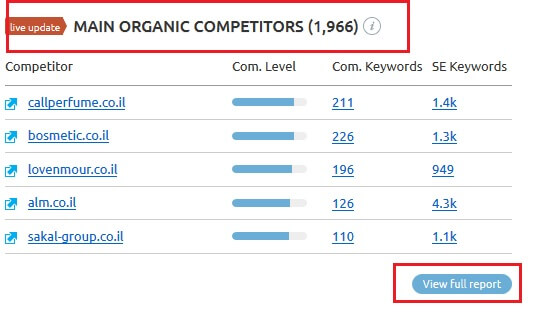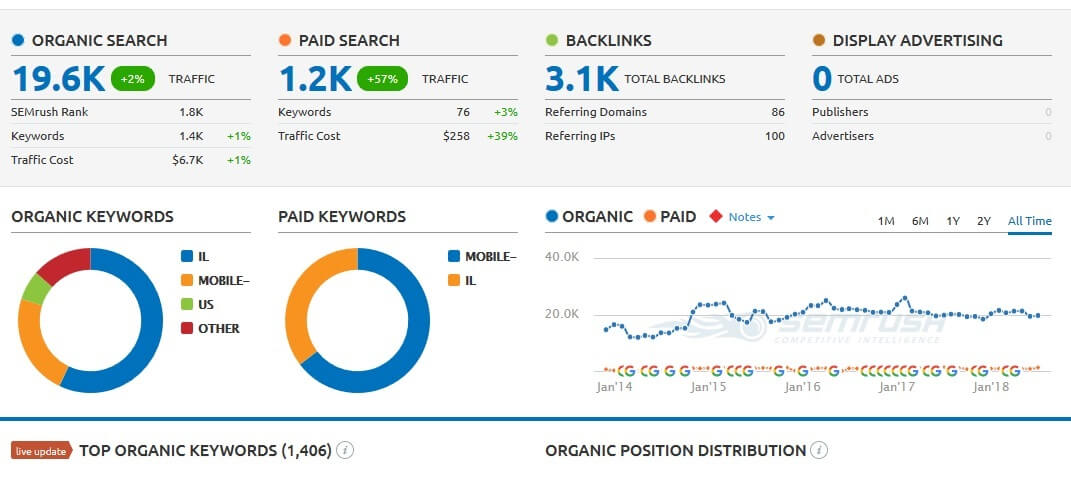Know Your Enemy – Competitors Research for SEO
Competitors’ research is an essential first stage in the SEO process. The competitors’ research allows you to understand which websites dominant the search results in the niche, what is their SEO strategy, on which keywords do you they focus and where do they get links from. It also gives you a clue about the budget and resources required to move the site up in the search results.
Competitors’ analysis should also be a part of the continuous SEO activity. For example, one of the first things to check after a sudden drop in ranking is the competitors’ activity. In many cases the reason won’t necessarily be a Google update and not even something you did – but something the competitors did better.
How to Identify the Competitors?
The first step would be to recognize the main competitors. Note that your direct competitors, i.e. similar businesses that offer the same products or services to the same people and at the same price range, are not necessarily your competitors on Google search results; you may find yourself competing with indirect competitors, and even with large general websites such as Wikipedia, YouTube and news publishers.
Search competitors can be found using web tools such as SEMrush, which suggests competitors for your domain or keywords and provides data about each competitor’s organic and paid traffic, approximated budget, main keywords, backlinks and even ad samples.


The list of competitors can be filtered using three criterions:
- Common keywords
- The competing site’s age and authority
- Its traffic and budget
If the competitors’ research led to the conclusion that it’s a tough competition, you might want to consider to broaden the keyword research and focus on less competitive keywords. For that purpose, you can use the Performance report on Google Search Console as well as the competitors’ keyword report on SEMrush. In this case, it will be wiser to choose keywords with lower search volume as they are easier to rank and can generate quality traffic.
It’s also important to note that competition is relative. While old and established websites can aspire to rank on general, short-tail competitive keywords, such as “hotel”, for new websites it will be a mistake to add them to their keywords list.
Competitors’ Links Analysis
The competitors’ research can also help you reveal the competitors’ backlinks profile and to discover new resources for potential links. For that purpose you can use tools such Majestic SEO, which can be used to find the number of incoming of links, referring domains, types of links, anchor texts and quality scores of the linking sites.
The competitors’ links analysis can often explain the ranking differences between you and your competitors or a sudden drop in ranking. And it can also encourage you to gain similar links. Of course, many of the competitors’ links will be irrelevant or unreachable, but generally speaking, if a website links to more than one competitor, there’s a greater chance it would add a link to your website as well.

Technical Audit of Competitors’ Sites
We also recommend reviewing some of the technical issues in the competitors’ website to find what are they doing better then you.
Site Speed: Is the competitor’s site significantly faster than yours? Users – and search engines – prefer fast websites.
Mobile Usability: How is the user experience for smartphone and tablet users at your competitors’ website comparing to yours? It is essential to adjust your site for mobile users.
Security: Did your competitors transferred to encrypted protocol (https) while your website was left behind? Google announced years ago that they prioritize secured sites in their search results.
Content Review
Which types of content work best for your competitors and how do they use content to overtake you in Google search results? To answer these questions you will have to review the competitors’ website content:
– Which content appears in the homepage and the main landing pages?
– Which pages are highlighted in the website’s menus?
– Do they have blog, and if so, how often do they update it and with which types of content? (Video, long-form content, lists, interviews, infographics?)
– Which contents get the most likes, shares and comments on Facebook and other social sites?
– Do they use schema tags to highlight structured data?
– Do they have a newsletter, and if so, how to they encourage submissions?
The bottom line, even if you prefer to forget about your competitors, you might want to check in on their digital marketing activities once in a while to see what they are doing and learn from them.



